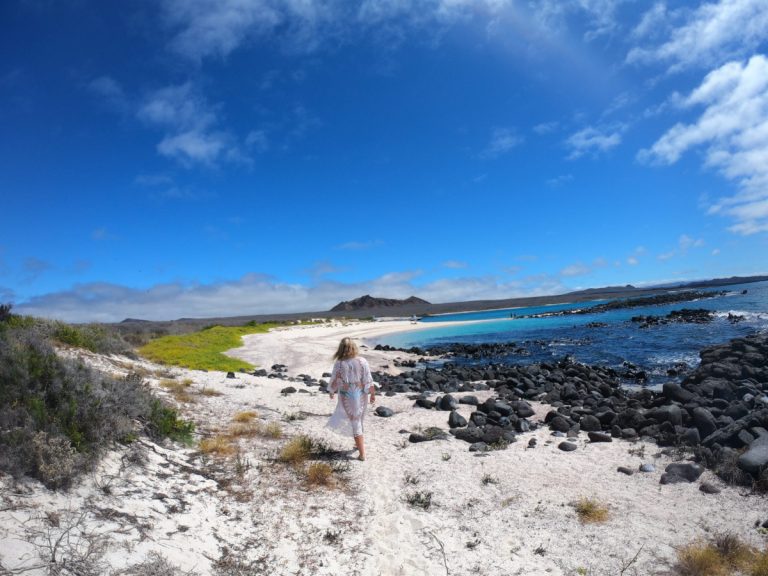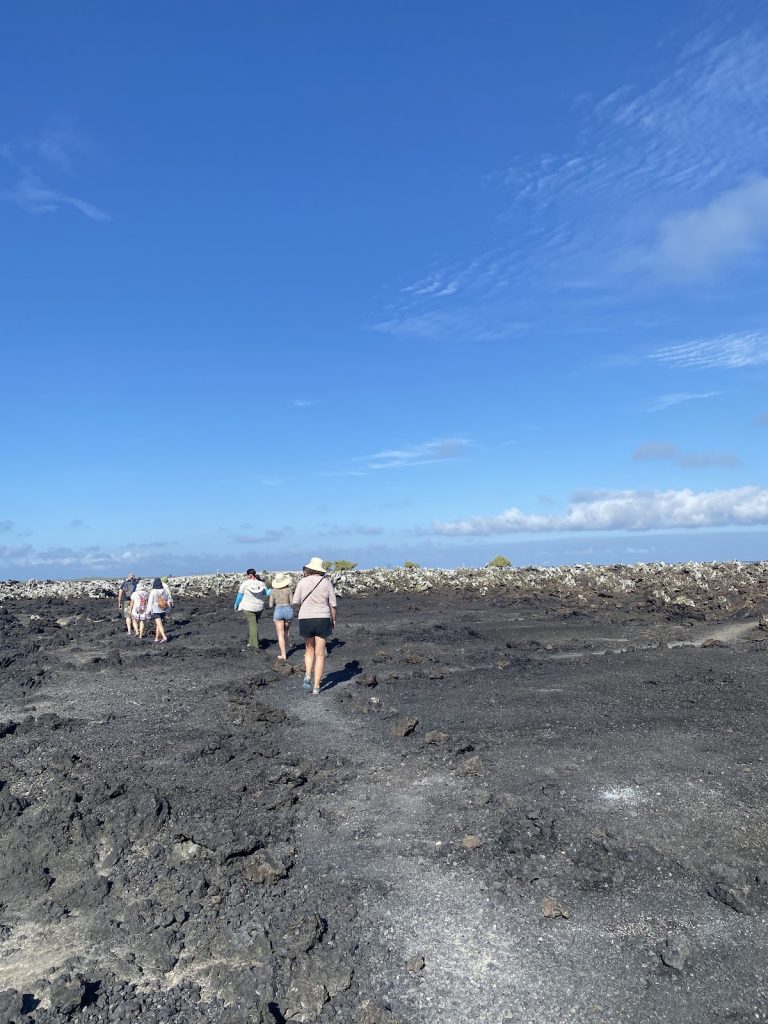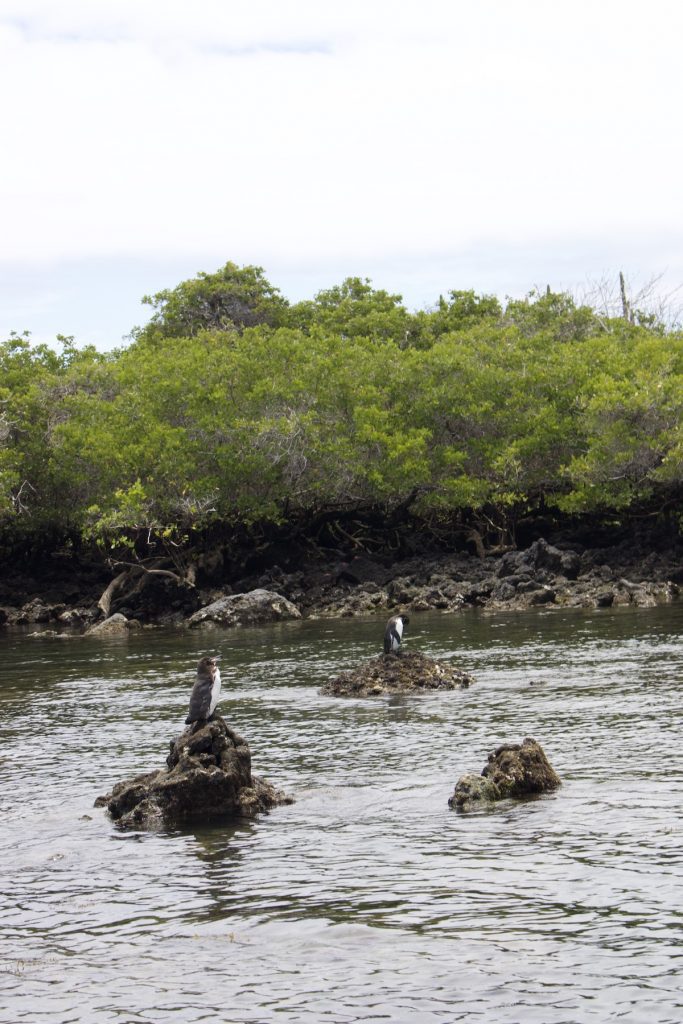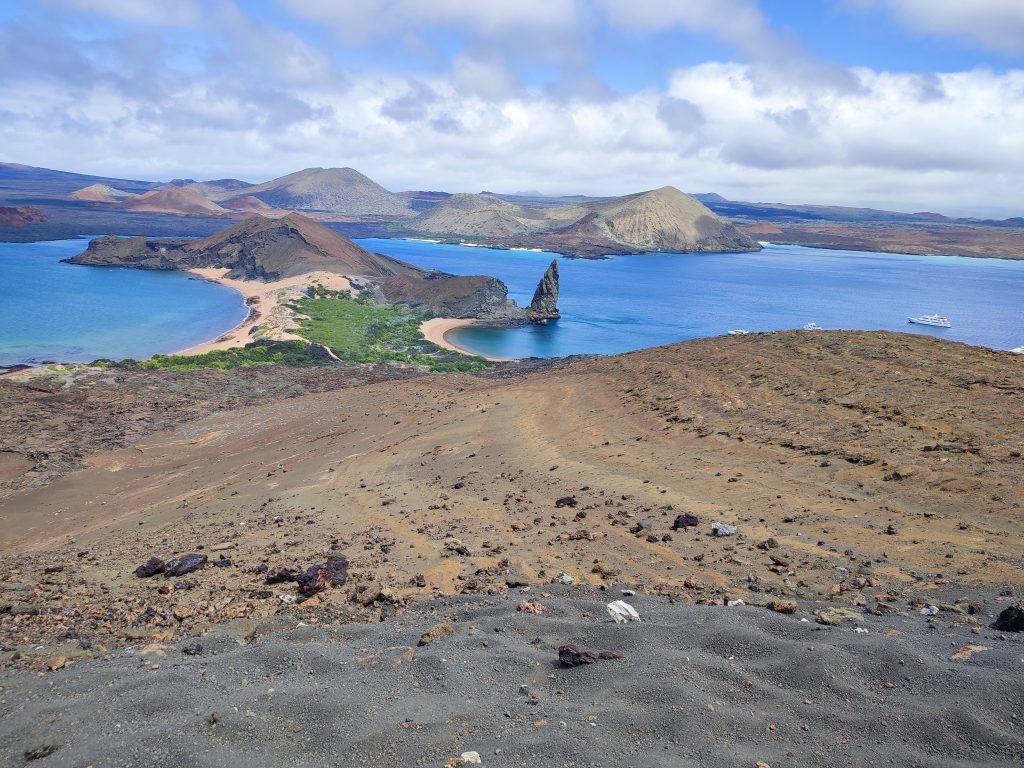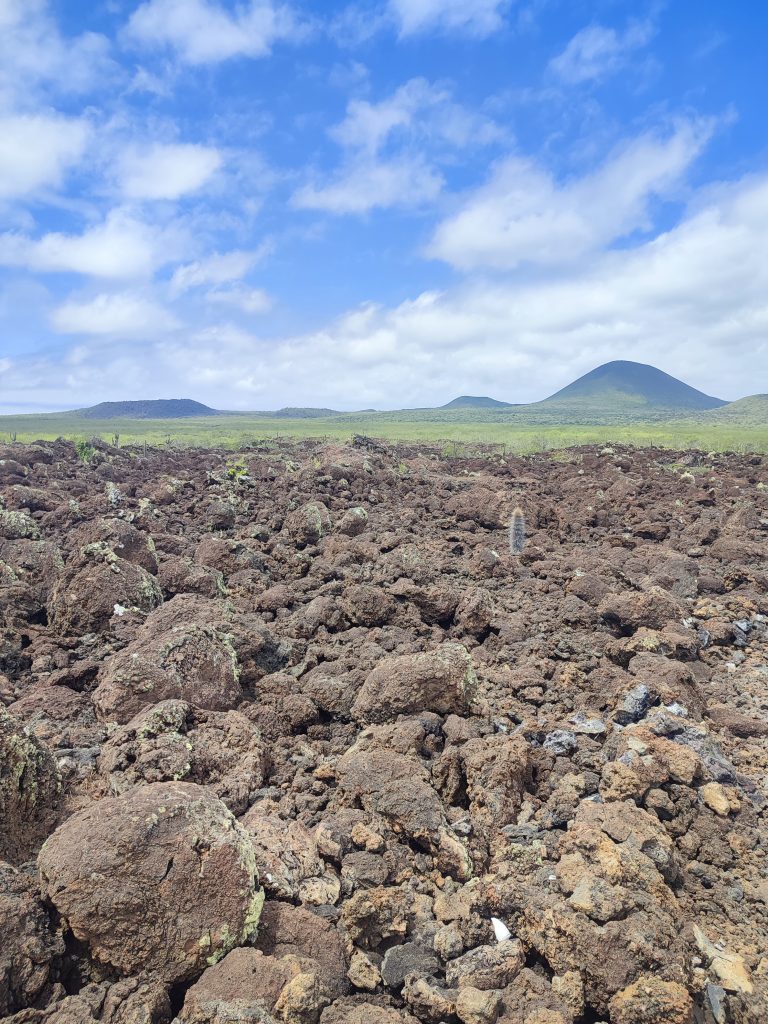The Republic of Ecuador officially owns the Galapagos Islands, having gained sovereignty over them in 1832 when it annexed the archipelago from the Republic of Gran Colombia. Since then, the Galapagos Islands have been considered an integral part of Ecuador’s territory, celebrated for their unique biodiversity and scientific significance. Today, the islands are not only a symbol of Ecuador’s natural heritage but also a vital conservation area, attracting visitors and researchers from around the world.
This post will briefly discuss the history of the Galapagos Islands, including its tourism and economic development.
When we visited the equator sites in Ecuador, learning about both the historical monument and true GPS location made the experience so much richer. Get a FREE custom itinerary from local experts who know all the fascinating historical and geographical spots. Your support helps this blog and local Ecuadorian communities!
Galapagos History
The Galapagos Islands have a rich and complex history of human presence that stretches back thousands of years. While the earliest known inhabitants were likely pre-Columbian indigenous groups, their exact origins and activities remain unclear, with evidence suggesting that they may have used the islands as temporary fishing or hunting grounds.
In the 16th century, the islands came under the control of the Spanish Empire after being discovered by Fray Tomás de Berlanga, the Bishop of Panama, in 1535. Despite this, the Spanish showed little interest in colonizing the Galapagos due to its harsh environment and remote location. The name “Galapagos” is derived from “Insulae de los Galopegos,” meaning “Islands of the Tortoises,” in reference to the giant tortoises found there.
Over the next few centuries, the islands were frequented by explorers, pirates, and whalers who used them as a base for resupplying or conducting illegal activities. This resulted in sporadic and unofficial colonization efforts by people from different countries, contributing to the islands’ evolving human history.
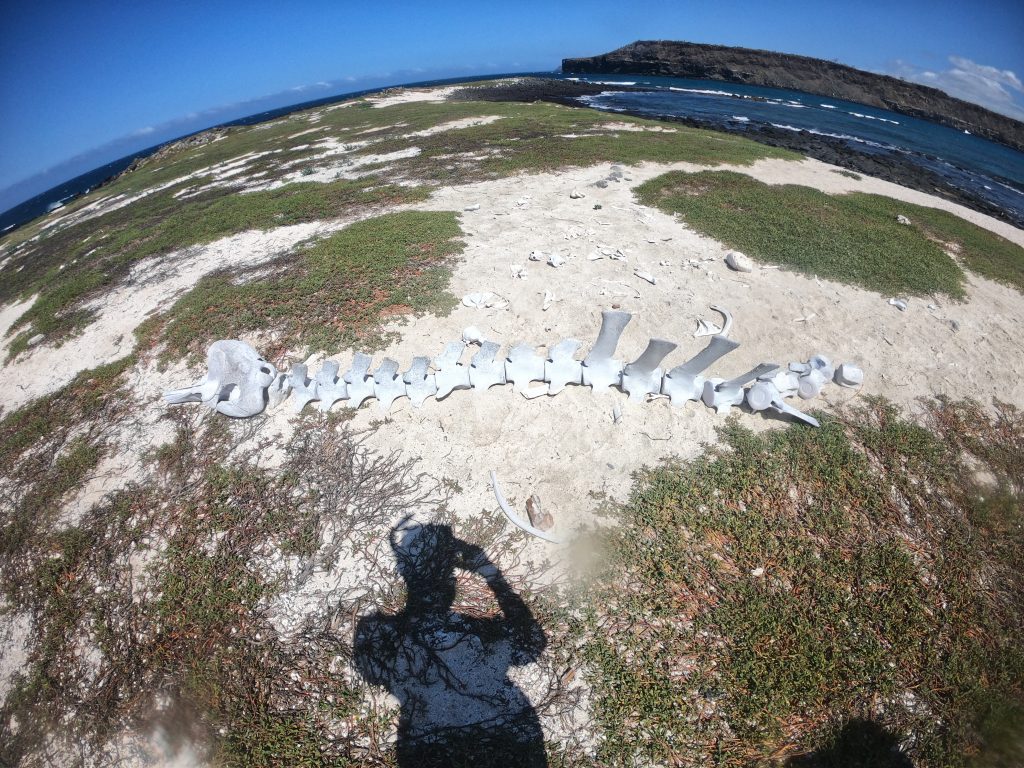
Throughout history, several nations, including the United States, the United Kingdom, and France, expressed interest in establishing a presence on the Galapagos Islands, drawn by their strategic location and potential natural resources. Despite this interest, no formal settlements were created.
During World War II, the islands gained renewed importance when the United States established a small naval base on Baltra Island to protect the Panama Canal and patrol the Pacific. This base played a key role in the U.S. defense strategy against the Japanese Empire. Following the war, control of Baltra was returned to Ecuador, and the airstrip built by the U.S. military was converted into a civilian airport, which now serves as a main gateway for visitors arriving from the mainland.
The mid-20th century saw growing interest in the Galapagos, particularly as tourism and scientific curiosity about the islands’ unique biodiversity increased. Immigrants from North America, Europe, and Ecuador contributed to expanding human settlements, and ecotourism became a crucial industry. The rise of ecotourism not only supported the local economy but also reinforced efforts to protect the islands’ fragile ecosystems, attracting visitors keen on experiencing its natural beauty and wildlife.
Formation of the Galapagos National Park
In 1934, Ecuador took a pivotal step by designating the Galapagos Islands as a national park, acknowledging the islands’ extraordinary ecological value and the urgent need to protect their delicate ecosystems. This decision marked the beginning of formal conservation efforts and set the groundwork for the islands’ long-term governance and preservation.
Building on this commitment, in 1959, Ecuador further solidified its dedication to conservation by declaring 97% of the land area of the Galapagos Islands as part of the Galapagos National Park. This bold move was designed to protect the islands’ rich biodiversity, ensuring that human activity would be carefully managed to minimize harm to the unique flora and fauna that call the Galapagos home.
These early conservation efforts were essential in curbing the negative effects of growing human settlement and tourism, while also positioning the Galapagos Islands as a global model for ecological preservation.
The Galapagos National Park has been instrumental in preserving the islands’ unique natural heritage, implementing strict regulations to safeguard the fragile ecosystem and manage the impact of tourism. To protect the islands, the park authorities have taken proactive measures such as controlling invasive species, which threaten the delicate balance of local biodiversity, and closely monitoring wildlife populations to ensure their health and sustainability.
Educational efforts are also central to the park’s mission, with programs in place to inform visitors about the importance of conservation and responsible tourism. By raising awareness about the islands’ fragile environment, the park encourages visitors to be mindful of their ecological footprint.
Today, the Galapagos National Park works collaboratively with a diverse array of stakeholders, including local communities, international conservation organizations, and scientific researchers. This collective effort aims to ensure that the natural beauty and biodiversity of the Galapagos Islands remain intact for future generations, while also supporting sustainable development and the local economy. Through ongoing conservation programs and partnerships, the park continues to be a beacon of ecological preservation on a global scale.
Galapagos Marine Reserve
Tourism and Economic Development of the Galapagos Islands
Tourism plays a vital role in the Galapagos Islands, both economically and environmentally. The islands’ extraordinary biodiversity and unique ecosystems draw visitors from all corners of the world, and the revenue generated from this influx supports a wide array of local industries, including hospitality, transportation, and small businesses. The thriving tourism sector not only sustains the economy of the islands but also fosters a sense of community well-being by creating jobs for the local population.
Crucially, tourism income also contributes to the preservation and sustainability of the Galapagos’ delicate ecosystems. A portion of the revenue is allocated to fund essential conservation projects and maintain the Galapagos National Park and Marine Reserve. These funds help enforce regulations, manage protected areas, and combat threats such as invasive species. In addition, they support environmental education programs that raise awareness about the importance of conservation among both locals and visitors.
By providing sustainable employment opportunities, tourism reduces the islands’ dependence on industries that could negatively impact the environment, such as large-scale fishing or development projects. This balance between responsible tourism and conservation helps ensure that the Galapagos Islands remain a well-preserved natural wonder for generations to come.
Looking back, I wish I’d known more about Ecuador’s fascinating history before visiting the equatorial monuments. Get a FREE personalized itinerary from local experts who can help you explore both the historical and modern significance of Ecuador’s unique position. Your quote request supports this blog and local Ecuadorian businesses!
The Galapagos Islands have implemented strict guidelines to regulate tourism, aiming to preserve their unique ecosystems while allowing visitors to experience their wonders. These guidelines include limiting the number of tourists, restricting access to sensitive areas, and ensuring that activities like snorkeling, hiking, and wildlife viewing are conducted in an environmentally responsible manner. The Galapagos National Park and Marine Reserve closely monitor tourist activities to protect the islands’ fragile ecosystems.
Sustainable eco-tourism practices are strongly encouraged throughout the islands, with an emphasis on nature-based tourism and eco-friendly accommodations. Many hotels and lodges are designed to have minimal environmental impact, using renewable energy, recycling programs, and sustainable water management. Tours and excursions prioritize small group sizes to reduce pressure on wildlife and the environment.
In addition to managing the flow of visitors, educational programs are offered to promote responsible tourism. Tourists are educated on how to respect wildlife, avoid disturbing natural habitats, and follow “leave no trace” principles. These efforts ensure that travelers are aware of their impact and contribute to the conservation of the Galapagos during their stay, helping preserve the islands for future generations.

Planning trip to Galapagos Islands?
My wife and I spent two weeks on these magnificent islands, visited nearly every possible tour, and explored as much as we could. I shared all the important details in my comprehensive Galapagos Islands Travel Guide, where I cover everything you need to know about planning a trip to the Galapagos.
Galapagos Islands travel might surprise you with extra fees to enter the islands, the complicated logistics between islands, booking tours, and knowing which spots are free to explore and which ones are not. I’ve covered it all in this Galapagos Travel Guide.
Also, if you’re planning a trip to the Galapagos, make sure to use my link for discounted hotel prices via Booking.com. It really helps support my blog!
Conclusion
The Galapagos Islands, with their rich history and unparalleled biodiversity, serve as a vital symbol of nature’s resilience and the importance of conservation. Ecuador’s dedication to safeguarding the Galapagos through the creation of the National Park and Marine Reserve highlights its long-standing commitment to preserving this unique ecosystem.
Known as a living laboratory of evolution, the Galapagos Islands have inspired scientists and travelers alike, offering a firsthand glimpse of nature’s intricate processes. Their unique ecosystems, species diversity, and evolutionary significance make the islands a treasure trove of discovery. Protecting the Galapagos is crucial not just for the islands themselves, but for fostering global awareness and education about environmental conservation. As a beacon of hope for sustainable eco-tourism and wildlife protection, the Galapagos Islands continue to captivate and inspire people from around the world, reminding us of our shared responsibility to protect the planet’s natural wonders.

